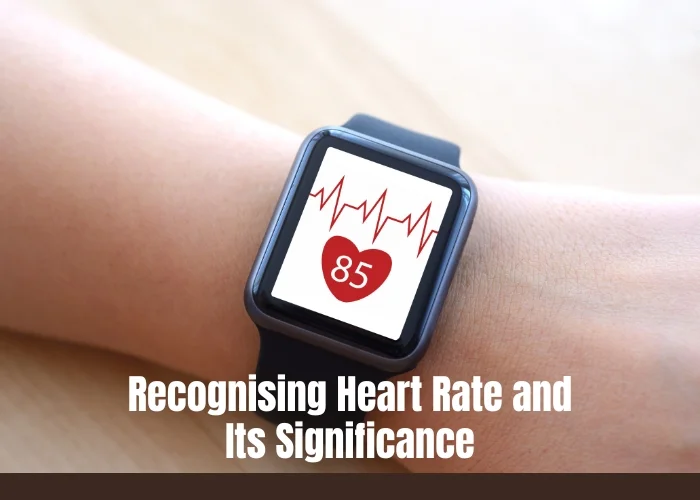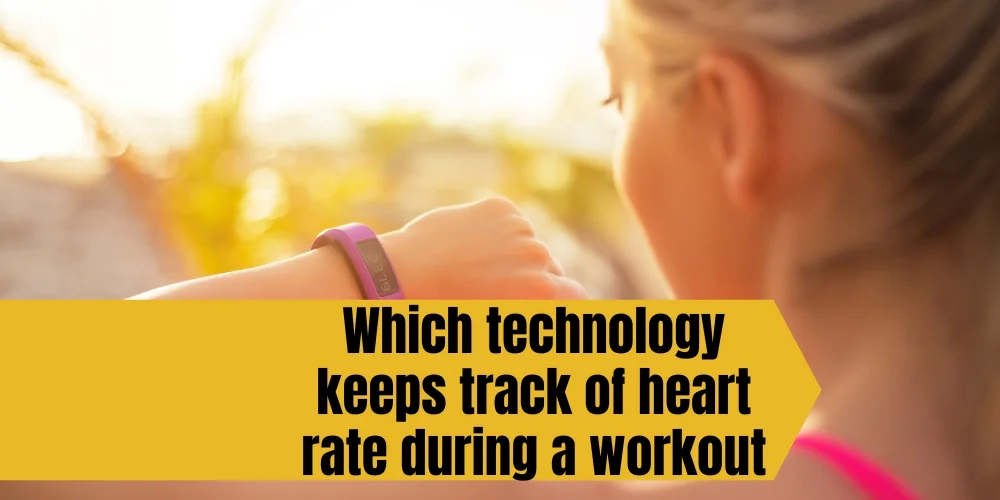Thanks to technology, we are all now data gurus, particularly when it comes to working out. Wearable technology has made it possible to know precisely how many steps, how far we ran, and how fast we were moving. Most of us were unaware of these details only a few years ago. Let’s discuss Which technology keeps track of heart rate during a workout.
Heart rate is one particular statistic that sticks out. You may learn a lot about your workout, your recovery capacity, and general health just from that number.
Important Takeaways:
- Optical and EKG sensors have transformed heart rate monitoring during exercise.
- Accurate heart rate monitoring is possible from the arm, chest, or wrist.
- It’s increasingly more accessible and affordable to track heart rate during exercise.
Reasons to wear one
According to Cleveland Clinic’s 2024 Heart Health Survey, half of all Americans expressly watch their heart rate, and 50% use at least one form of technology to monitor their health. Given that cardiovascular disease will account for 928,741 deaths in 2020, it should come as no surprise that it continues to be the leading cause of death in the US.
However, what role does your heart rate play in your workout regimen? Why is it important to monitor your heart rate when engaging in physical activity?
In addition to monitoring your heart rate, a heart rate monitor allows you to measure other vital data when doing out.
According to Travers, “Creating” the ideal cardiovascular exercise regimen involves both the duration and intensity of the workout.” You can achieve the ideal calorie expenditure and burning of fats and carbohydrates by focusing on your intensity. You can monitor the intensity of your workouts with a reliable heart rate monitor.
Heart rate monitors function by detecting the electrical signals coming from your heart. After that, a data center or wristwatch receives these signals. Many models allow you to analyze data on a computer; with such data, you can make sense of your workout and better comprehend the advantages of your fitness regimen. Although it can interfere with your workout, you can also obtain an approximate estimate by taking your pulse the old-fashioned way, feeling it in your neck or wrist. You can get more precise, up-to-date information using an electronic heart rate monitor.
Recognising Heart Rate and Its Significance

An essential indicator of the body’s circulatory function is heart rate. It measures the degree of physical exertion and is represented in beats per minute (BPM). Heart rate monitoring is essential for those who want to get the most out of their workouts and reach their fitness objectives.
The number of times the heart beats per minute while the body is at rest is known as the resting heart rate. It offers insightful information about a person’s cardiovascular health. It is possible to evaluate changes in fitness levels and general well-being by monitoring resting heart rate over time.
Heart rate monitoring during exercise can assist people in determining the intensity of their workout and making the appropriate modifications. People can ensure they are challenging themselves enough to notice growth without going overboard by maintaining within the proper heart rate ranges.
Is it necessary to use a cardiac monitor when working out?
No, using a heart rate monitor throughout your workout is not necessary. Even without one, you can have a healthy, active lifestyle with regular exercise. However, if you’re trying to lose weight and the data a heart rate monitor provides is crucial to you—especially during workouts—you might want to try it.
However, exerting oneself excessively is possible, and a heart rate monitor can warn you against doing so.
What do your heart rate zones signify, and how do you appropriately wear a heart rate monitor?
You can determine your current heart rate zone during exercise using a heart rate monitor. You must first decide on your maximum heart rate by deducting your age from 220. For instance, your maximum heart rate is 185 if you’re 35. You can now determine which heart rate zone is most effective for burning fat.
You burn 85% of your fat at 50% to 60% of your maximum heart rate & use 65% of your fat at 60% to 70% of your maximum heart rate. Furthermore, you burn just 45% of the fat, around 70% to 80% of body weight.
Advice on selecting the ideal heart rate monitor for your needs

A heart rate monitor is a more objective method of tracking your progress and determining your performance. Fitness trackers, which have supplanted strapless wrist-based heart rate monitors, and chest strap monitors have been the two most popular types over the past ten years, despite the introduction of other devices such as rings and bicep straps.
Smartwatches and fitness trackers using wearable technology
How It Works: These devices usually use photoplethysmography (PPG), a technique that measures the change in blood volume in the microvascular bed of tissue. PPG sensors measure the quantity of light reflected using a photodetector after LEDs emit light into the skin. Variations in blood flow impact light absorption, which is subsequently utilized to compute heart rate.
Popular Devices: The top devices on the market include the Xiaomi Mi Band, Fitbit, Garmin, and Apple Watch. In addition to monitoring heart rate, these gadgets track steps taken, calories expended, and, in some more sophisticated models, even electrocardiogram readings.
Heart Rate Monitors with Chest Straps:
How It Works: Electrocardiography (ECG) technology is used via chest straps to assess the heart’s electrical activity. The strap’s electrodes pick up electrical signals produced by heartbeats to precisely record the heart rate. These monitors are renowned for their accuracy and reliability, particularly for intense exercise. Serious athletes and those participating in endurance sports frequently favor them.
Examples: Because of their dependability and accuracy, the Garmin HRM-Dual, Wahoo TICKR, and Polar H10 are well-liked options.
Electronics for Smart Clothes Built Into Clothes:
How It Works: This technique physically embeds conductive fibers or sensors into garments, like shirts or shorts, to measure heart rate. Like conventional ECG monitors, the fabric-based sensors can identify the electrical signals the heart produces.
Benefits: They provide ease of use and comfort without the bulk of chest straps. They also fit in perfectly with exercise equipment.
Novel Products: Smart apparel for sports and fitness lovers is being pioneered by companies such as Hexoskin and MYZONE.
Apps for Smartphones That Utilise Flash and Camera Technology:
How It Works: Certain apps use the flash and camera on the smartphone to measure heart rate using PPG. By putting your finger on the camera lens, the software can identify minute color changes from blood flowing through your finger and translate them into information about your heart rate.
Accessibility: These applications can be a practical and easy-to-use solution for individuals who prefer not to carry additional devices or who exercise sometimes.
Well-known apps that offer quick and simple heart rate monitoring include Heart Rate Monitor, Cardiio, and Instant Heart Rate.
Cutting-Edge Sensors and IoT Devices Integrated with Gym and Fitness Systems:
How It Works: Heart rate sensors are a common feature of contemporary exercise equipment, including rowing machines, ellipticals, and treadmills. These gadgets monitor heart rate by combining PPG, ECG, and impedance cardiography.
Benefits: They improve the efficacy of the workout by offering continuous monitoring and the ability to modify workout intensity based on real-time heart rate data.
Examples: Heart rate monitoring devices are frequently integrated into equipment manufactured by companies such as Technogym, Precor, and Life Fitness.
In summary
How we monitor our heart rates during exercises has been completely transformed by technology, from bright clothes and sophisticated gym equipment to wrist-worn trackers. Regardless of your experience level, these technologies offer insightful data to help you reach your fitness objectives and maximize your training.

